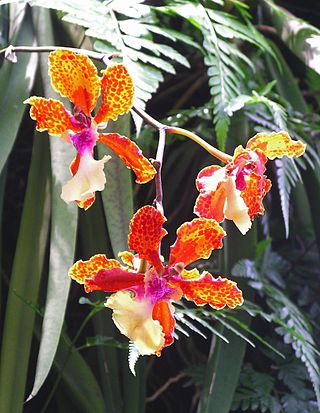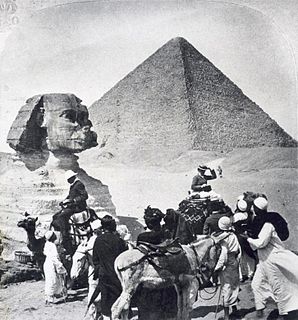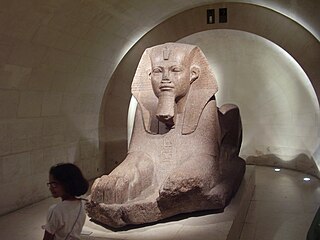
A tourist attraction is a place of interest that tourists visit, typically for its inherent or an exhibited natural or cultural value, historical significance, natural or built beauty, offering leisure and amusement.
Ethnic minorities in China are the non-Han population in the People's Republic of China (PRC).

Tourism in Singapore is a major industry and contributor to the Singaporean economy, attracting 18.5 million international tourists in 2018, more than three times Singapore's total population. It also claims to be environmentally friendly, and maintains natural and heritage conservation programs. Along with this, it also has one of the world's lowest crime rates. As English is the dominant one of its four official languages, it is generally easier for tourists to understand when speaking to the local population of the country, for example, when shopping. Transport in Singapore exhaustively covers most, if not all public venues in Singapore, which increases convenience for tourists. This includes the well-known Mass Rapid Transit (MRT) system. Singapore is the 5th most visited city in the world, and 2nd in Asia-Pacific.

Folklorama is an event that runs for two weeks each August in Winnipeg, Manitoba, Canada. Visitors to the festival are invited to sample cuisine and celebrate the cultural and ethnic heritage of people from dozens of cultures who have made Winnipeg their home. Folklorama is the world's largest and longest-running multicultural festival.

Cultural tourism is a type of tourism activity in which the visitor's essential motivation is to learn, discover, experience and consume the tangible and intangible cultural attractions/products in a tourism destination. These attractions/products relate to a set of distinctive material, intellectual, spiritual, and emotional features of a society that encompasses arts and architecture, historical and cultural heritage, culinary heritage, literature, music, creative industries and the living cultures with their lifestyles, value systems, beliefs and traditions.

A visitor center or centre, visitor information center, tourist information center, is a physical location that provides tourist information to visitors.

Ocean Park Hong Kong, commonly known as Ocean Park, is a marine mammal park, oceanarium, animal theme park and amusement park situated in Wong Chuk Hang and Nam Long Shan in the Southern District of Hong Kong. It is the second largest theme park in Hong Kong, after Hong Kong Disneyland, as well as the largest theme park in Hong Kong by area. It is also the second oldest theme park in Hong Kong, after the now-defunct Lai Chi Kok Amusement Park which closed on 31 March 1997, four months before the 1997 handover.

Cultural heritage tourism is a branch of tourism oriented towards the cultural heritage of the location where tourism is occurring.

Srimanta Sankaradev Kalakshetra, commonly known as Kalakshetra, is a cultural institution in the Panjabari area of Guwahati, Assam, India, named after the medieval poet-playwright and reformer Srimanta Sankardev. It includes a cultural museum, library, a children's park, and various facilities for preserving, demonstrating and performing cultural items and history. In addition to being Northeast India's largest cultural congregation, the Kalakshetra is also a major tourist spot in Guwahati. Built in the 1990s, the artistic excellence of Assam and rest of the north-eastern region is displayed here. There are eateries, places of worship, emporiums and open-air theatres within the sprawling Kalakshetra premises.

National identity is a person's identity or sense of belonging to one or more states or to one or more nations. It is the sense of "a nation as a cohesive whole, as represented by distinctive traditions, culture, and language". National identity may refer to the subjective feeling one shares with a group of people about a nation, regardless of one's legal citizenship status. National identity is viewed in psychological terms as "an awareness of difference", a "feeling and recognition of 'we' and 'they'". National identity also includes the general population and diaspora of multi-ethnic states and societies that have a shared sense of common identity identical to that of a nation while being made up of several component ethnic groups. Hyphenated ethnicities are an example of the confluence of multiple ethnic and national identities within a single person or entity.

GlobalFest is an annual cultural celebration in Calgary, Alberta, Canada.

Tourism in China is a growing industry that is becoming a significant part of the Chinese economy. The rate of tourism has expanded over the last few decades since the beginning of reform and opening-up. The emergence of a newly rich middle class and an easing of restrictions on movement by the Chinese authorities are both fueling this travel boom. China has become one of world's largest outbound tourist markets. According to Euromonitor International, economic growth and higher incomes in nearby Asian countries will help China to become the world's number one tourist destination by 2030.

Tourism in Taiwan is one of the major industries and contributor to the economy of Taiwan. In 2015, Taiwan received roughly 10 million international visitors. Tourism affairs are managed by the Tourism Bureau of the Ministry of Transportation and Communications of Taiwan.
Identity tourism may refer to the act of assuming a racial, ethnic, socioeconomic, sexual or gender identity for recreational purposes, or the construction of cultural identities and re-examination of one’s ethnic and cultural heritage from what tourism offers its patrons.

Heritage commodification is the process by which cultural themes and expressions come to be evaluated primarily in terms of their exchange value, specifically within the context of cultural tourism. These cultural expressions and aspects of heritage become "cultural goods"; transformed into commodities to be bought, sold and profited from in the heritage tourism industry. In the context of modern globalization, complex and often contradictory layers of meaning are produced in local societies, and the marketing of one's cultural expressions can degrade a particular culture while simultaneously assisting in its integration into the global economy. The repatriation of profits, or "leakage", that occurs with the influx of tourist capital into a heritage tourist site is a crucial part of any sustainable development that can be considered beneficial to local communities. Modern heritage tourism reproduces an economic dynamic that is dependent upon capital from tourists and corporations in creating sustained viability. Tourism is often directly tied to economic development, so many populations see globalization as providing increased access to vital medical services and important commodities.
Lahore, being the richest cultural city in Pakistan, celebrates a number of festivals throughout the year. It is most popular for the festivals of Basant and Mela Chiraghan, but many others are celebrated in the metropolis as well.
The Edmonton Heritage Festival is a three-day festival honouring Alberta's cultural heritage and cultural diversity, which is held annually over the Civic Holiday weekend in William Hawrelak Park in Edmonton, Alberta, Canada.

The Hornbill Festival is an annual festival celebrated from 1 to 10 of December in the Northeastern Indian state of Nagaland. The festival represents all ethnic groups of Nagaland for which it is also called the Festival of Festivals.

Ethnic villages are a basic administrative district within China designated for minority ethnic groups. The villages are designated by the government within geographical regions where minority groups live. The approval and establishment of a village is most often the responsibility of provincial governments and prefectural governments, however villages are often established with different requirement standards. According to a local ordinance regarding the protection of interests relating to minority group villages, a meeting is held where 30% of participants belong to a minority group; if the local government approves of the formation of the new establishment, the region is designated an ethnic village. In Hubei province, villages where minorities account for 50% of the population are designated as minority group villages.

Cultural governance is governance of culture. It includes cultural policy made by governments but extends also to cultural influence exerted by non-state actors and to policies which influence culture indirectly.















